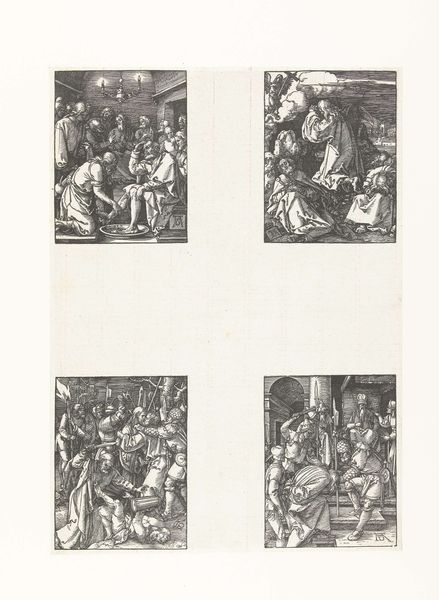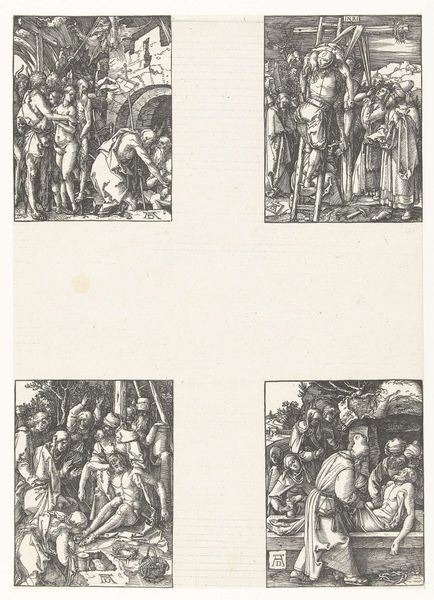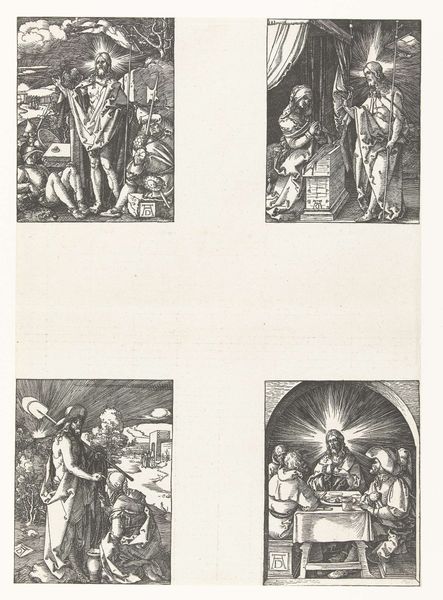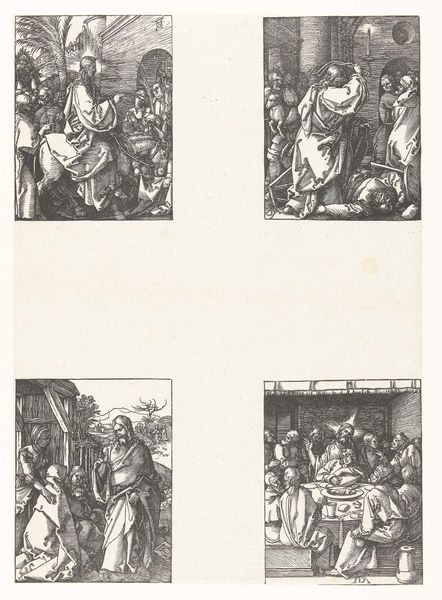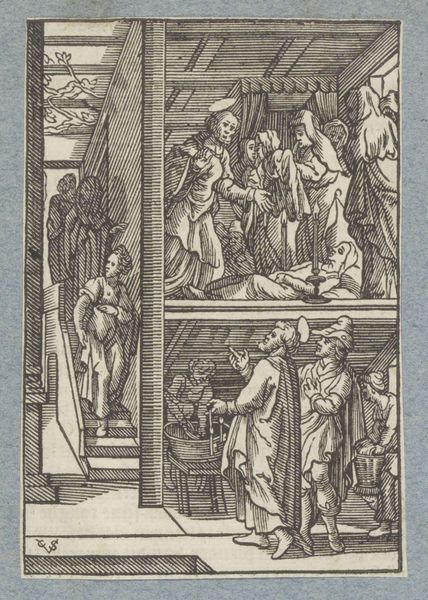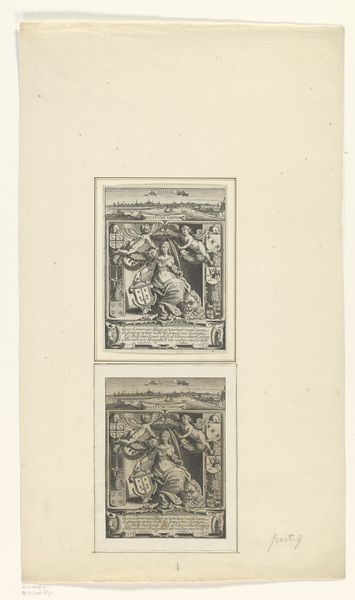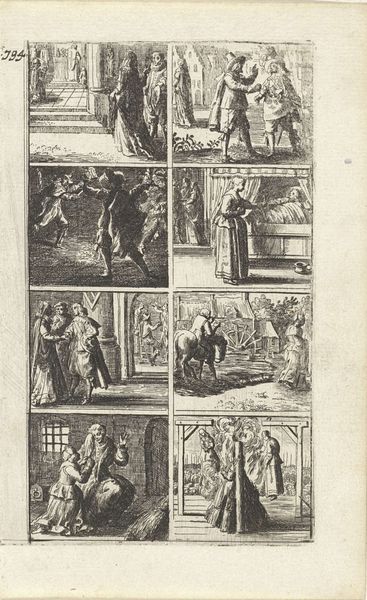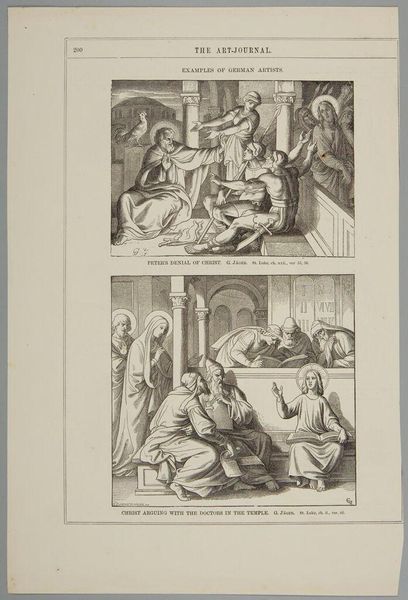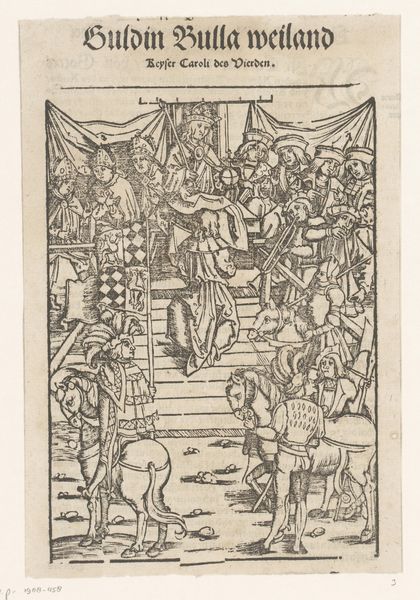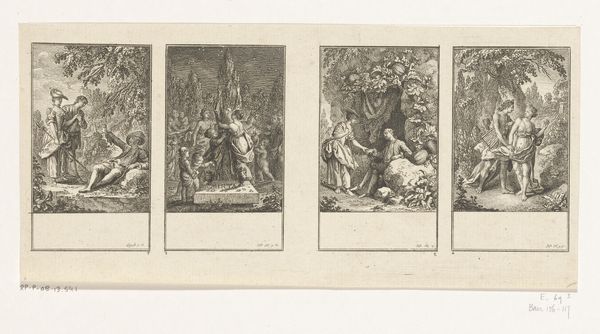
Geseling, Doornenkroning, Christus aan het volk getoond (Ecce homo), Pilatus wast zijn handen in onschuld 1509
0:00
0:00
print, engraving
# print
#
figuration
#
ink line art
#
line
#
history-painting
#
northern-renaissance
#
engraving
Dimensions: height 127 mm, width 97 mm, height 354 mm, width 252 mm
Copyright: Rijks Museum: Open Domain
Albrecht Dürer made this woodcut, depicting four scenes from the Passion of Christ, in Germany, at the turn of the sixteenth century. These images are heavy with political and religious meaning. Consider the structures that held this meaning in place. Religious institutions like the church were central to social life, and political power was often justified in religious terms. Dürer’s work reflects a growing interest in the individual and the human, a move that would ultimately challenge institutional control. Woodcuts like these would have been relatively affordable and widely circulated, helping to spread not only religious stories, but also new ideas about the relationship between humanity and authority. As historians, we might look to religious texts, political pamphlets, and economic data to understand the context in which this woodcut was made and the social and institutional forces that shaped its production and reception.
Comments
No comments
Be the first to comment and join the conversation on the ultimate creative platform.
